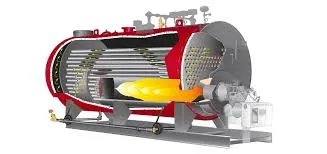
Nov . 19, 2024 07:06 Back to list
boiler temperature setting for hot water
Boiler Temperature Setting for Hot Water A Comprehensive Guide
When it comes to ensuring your home has an ample supply of hot water, the boiler temperature setting plays a crucial role. Properly adjusting and maintaining the temperature not only contributes to your comfort but also affects energy efficiency and safety. This article will explore the ideal boiler temperature settings for hot water and provide insights on how to optimize your system.
Understanding Boiler Temperature Settings
Boilers are designed to heat water for various purposes, including space heating and domestic hot water supply. The temperature settings on a boiler typically range from 120°F to 180°F (49°C to 82°C). However, the recommended setting for residential water heating is usually around 140°F (60°C). This temperature strikes a balance between comfort, efficiency, and safety.
The Benefits of the Ideal Temperature Setting
1. Energy Efficiency Setting your boiler to an optimal temperature can significantly reduce energy consumption. Higher temperatures demand more energy to maintain, leading to increased utility bills. Keeping the temperature around 140°F ensures that the water is hot enough for your needs while minimizing energy waste.
2. Safety Concerns Water at temperatures above 140°F can cause scalding injuries, especially for children and the elderly. By keeping your boiler set at a lower temperature, you decrease the risk of burns while still providing enough heat for daily activities like showering, dishwashing, and laundry.
3. Preventing Bacterial Growth Maintaining a temperature of at least 140°F helps to prevent the growth of harmful bacteria, such as Legionella, which can thrive in lukewarm water. This is particularly important for water heaters that may sit unused for extended periods. However, it's essential to periodically flush the system to remove sediment that may harbor bacteria.
boiler temperature setting for hot water

How to Adjust Your Boiler Temperature
Most modern boilers come equipped with a thermostat or control panel that allows you to adjust the temperature settings easily. Here’s a simple guide to making the adjustment
1. Locate the Thermostat Depending on your boiler type, the thermostat is often found on the front panel. For more complex systems, refer to the user manual for specific instructions.
2. Adjust the Setting Turn the thermostat dial or use the digital controls to set the temperature to 140°F. If your boiler has a label indicating hot water or a similar option, select that as it typically corresponds to the recommended temperature settings.
3. Monitor the Temperature After making adjustments, give the system some time to reach the desired temperature. You can test the hot water temperature at a faucet using a thermometer to ensure it aligns with your setting.
4. Routine Maintenance Regular maintenance, including checking and calibrating the thermostat, is crucial for the efficiency and longevity of your boiler. This preventive approach ensures that the system operates safely and effectively.
Conclusion
In conclusion, setting your boiler temperature to the ideal level is essential for ensuring a safe, efficient, and comfortable home environment. By keeping the temperature at 140°F, you can enjoy hot water for your daily needs while protecting your household from potential hazards. Remember to check your boiler settings regularly and consult with a professional if you have any concerns about your system’s performance. With proper care, your boiler will continue to provide reliable service and comfort for years to come.
-
Best Steam Boiler Design PDF Free Design Calculation & Diagram Downloads
NewsJun.10,2025
-
Hot Boiler Water Heater Efficient Heating Solutions for Home & Commercial Use
NewsJun.10,2025
-
Steam Boiler Safety Devices High-Quality Protection Valves
NewsJun.10,2025
-
Ultimate Steam Boiler Checklist for Safety & Efficiency
NewsJun.10,2025
-
Optimal Hot Water Boiler Temperature Setting Guide
NewsJun.10,2025
-
Effective Hot Water Boiler Chemical Treatment Protect & Maintain
NewsJun.09,2025
Related PRODUCTS






















